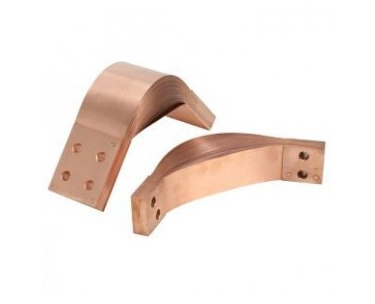2025-06-20 18:04:00
A Plated Solid Copper BusBar is an essential electrical component designed for efficient power distribution in various industrial and commercial applications. These busbars consist of high-purity solid copper cores with precisely applied metallic plating to enhance performance characteristics. The combination of copper's inherent conductivity with specialized surface treatments creates a superior solution for demanding electrical systems.

Exceptional Conductivity: Solid Copper Busbars offer outstanding electrical conductivity with typical values of 100% IACS (International Annealed Copper Standard), equivalent to approximately 58.0 MS/m at 20°C. This surpasses aluminum alternatives by about 65% in conductivity efficiency.
Enhanced Surface Properties: The plating (typically tin, silver, or nickel) provides:
Oxidation resistance with surface resistivity maintained below 0.5 μΩ·cm even after prolonged exposure
Contact resistance reduction by 15-30% compared to bare copper
Temperature stability up to 150°C for tin plating and 250°C for silver plating
Mechanical Strength: Cold-rolled copper busbars demonstrate:
Tensile strength ranging from 300-450 MPa
Hardness of 75-110 HV (Vickers scale)
Elongation at break between 10-25%
Thermal Performance: With a thermal conductivity of 401 W/(m·K) at 20°C, these busbars efficiently dissipate heat, maintaining temperature rises below 50°C under standard current loads of 1000-5000 A depending on cross-section.
Power Distribution Systems: Plated copper busbars serve as backbone components in:
Switchgear assemblies with current ratings up to 6300A
Main distribution boards in commercial buildings
Power factor correction capacitor banks
Industrial Equipment: Critical applications include:
Motor control centers (MCCs) handling 400-690V systems
Welding machine power distribution
Large-scale UPS (Uninterruptible Power Supply) installations
Renewable Energy Systems: Essential for:
Solar farm combiner boxes with 1000VDC ratings
Battery energy storage system interconnections
Wind turbine power collection networks
Transportation Infrastructure: Used extensively in:
Railway traction power systems
Electric vehicle charging stations
Airport ground power units
Regular Inspection Protocol:
Perform visual inspections quarterly for signs of plating wear or discoloration
Measure contact resistance annually using micro-ohmmeter (target: <10 μΩ at joints)
Check torque values on connections every 6-12 months (typically 20-50 N·m depending on size)
Cleaning Procedures:
Use only approved copper cleaners with pH range of 6-8
For oxidation, employ non-abrasive cleaners with 5-10% citric acid solution
After cleaning, apply thin layer of antioxidant compound (rated for >1000 hours salt spray resistance)
Plating Repair:
For localized plating damage (<5% surface area), use approved plating pens with matching composition
Extensive damage requires professional re-plating with minimum thickness of 5-10μm
Silver-plated surfaces may need periodic reapplication in high-sulfur environments
Thermal Monitoring:
Install infrared temperature sensors at critical joints
Investigate any temperature differentials exceeding 15°C from ambient
Maximum operating temperature should not exceed 90°C for tin-plated or 130°C for silver-plated busbars
Proper handling of plated copper busbars requires attention to:
Storage in controlled environments (relative humidity <60%, temperature 10-30°C)
Protection from corrosive atmospheres (H2S concentration <0.1 ppm, SO2 <0.5 ppm)
End-of-life recycling through certified copper reclamation processes